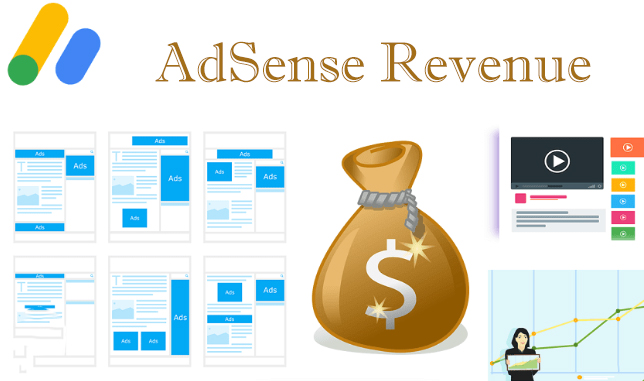Welcome to the intricate world of online advertising! If you’re a content creator or a publisher relying on AdSense for revenue, you’ve probably noticed a significant challenge creeping up over the past few years: ad blocking. AdSense has been a lifeline for many websites, providing a steady stream of income through display ads. However, the rise of ad blocking software is throwing a spanner in the works, disrupting the flow of revenue and posing a serious threat to online monetisation strategies.
Ad blocking isn’t just a minor nuisance; it’s a growing movement among internet users who are fed up with intrusive, irrelevant, and sometimes even harmful ads. As more users install ad blockers, the number of ad impressions and clicks plummets, leading to substantial revenue losses for publishers. This trend has forced many to rethink their monetisation strategies and find new ways to keep the cash flow steady without compromising the user experience.
In this article, we’ll delve deep into the world of ad blocking and its impact on AdSense revenue. We’ll explore why users turn to ad blockers, how you can mitigate their effects, and what alternative revenue streams you can tap into. By the end of this guide, you’ll have a comprehensive understanding of how to address the challenges posed by ad blocking and maintain a healthy revenue stream. So, let’s dive in!

Understanding Ad Blocking
What is Ad Blocking?
Ad blocking refers to the use of software tools designed to prevent ads from being displayed on websites. These tools can be browser extensions or standalone applications that filter out ad content before it reaches the user, providing a cleaner and faster browsing experience.
How Ad Blockers Work
Ad blockers work by analysing the content of a webpage and identifying elements that match known patterns of ads. They then block these elements from loading, effectively removing the ads from the user’s view. Some advanced ad blockers can even block ads that are integrated into the content, making them incredibly effective at filtering out unwanted advertisements.
Popular Ad-Blocking Tools and Their Features
There are several popular ad-blocking tools available, each with its own set of features:
- AdBlock Plus: One of the most widely used ad blockers, known for its customisable filters and ability to block tracking.
- uBlock Origin: A lightweight, efficient ad blocker that uses less memory and CPU resources.
- Ghostery: Focuses on blocking trackers and enhancing privacy while also blocking ads.
- AdGuard: Offers comprehensive ad blocking, including the ability to block ads in apps and on mobile devices.
The Impact of Ad Blocking on AdSense Revenue
Decreased Impressions and Clicks
The most immediate impact of ad blocking on AdSense revenue is the reduction in ad impressions and clicks. With fewer ads being displayed, the potential for users to interact with them drops significantly. This decline directly affects the revenue generated from these ads.
Revenue Loss Statistics
Various studies and reports have highlighted the financial impact of ad blocking on publishers. According to a study by PageFair, ad blockers cost publishers over $12 billion annually in lost revenue. This figure is expected to grow as more users adopt ad-blocking software.
Long-Term Effects on Publishers and Content Creators
In the long term, the widespread use of ad blockers could threaten the viability of free online content. Publishers and content creators may struggle to cover their costs, leading to a decline in the quality and quantity of free content available on the internet. This scenario underscores the need for innovative monetisation strategies that can coexist with ad blocking.
Also, Read – Optimising Your YouTube Channel for SEO
Why Users Use Ad Blockers
Concerns About Privacy and Security
One of the primary reasons users install ad blockers is to protect their privacy and security. Many ads track user behaviour across the web, collecting data that can be used for targeted advertising. Ad blockers help users regain control over their personal information and reduce the risk of malware and malicious ads.
Annoyance with Intrusive Ads
Intrusive ads, such as pop-ups, auto-playing videos, and large banners, disrupt the browsing experience and annoy users. Ad blockers eliminate these distractions, allowing users to enjoy a cleaner, more pleasant web experience.
Impact on Website Performance and User Experience
Ads can significantly slow down page load times and consume bandwidth, particularly on mobile devices. By blocking ads, users can improve website performance and reduce data usage, enhancing their overall browsing experience.
Strategies to Mitigate the Impact of Ad Blocking
Improving Ad Quality and Relevance
One way to mitigate the impact of ad blocking is to improve the quality and relevance of your ads. Users are more likely to accept and engage with ads that are non-intrusive and relevant to their interests. Focus on creating high-quality, targeted ads that enhance rather than detract from the user experience.
Implementing Ad-Block Detection Scripts
Ad-block detection scripts can help you identify users who are using ad blockers and take appropriate action. You can display messages asking them to disable their ad blocker or offer alternative ways to support your site, such as subscribing or making a donation.
Offering Ad-Free Experiences for a Fee
Consider offering an ad-free experience for users who are willing to pay a small fee. This approach not only compensates for lost ad revenue but also caters to users who prefer a cleaner browsing experience.
Alternative Revenue Streams
Exploring Affiliate Marketing
Affiliate marketing is a viable alternative to traditional ad revenue. By promoting products or services and earning a commission on sales generated through your affiliate links, you can diversify your income and reduce reliance on ads.
Incorporating Sponsored Content
Sponsored content, such as articles, videos, or social media posts created in partnership with brands, can provide a significant revenue boost. Ensure that sponsored content is clearly labelled and relevant to your audience to maintain trust and transparency.
Diversifying Income with Merchandise or Services
Selling merchandise or offering services related to your content can also generate additional revenue. This could include branded merchandise, online courses, consulting services, or exclusive content for paying subscribers.
Also, Read – The Role of Social Media Influencers in Digital Marketing
Creating Ad-Blocker-Friendly Content
Focus on Native Advertising
Native advertising involves integrating ads seamlessly into your content, making them less intrusive and more engaging. Examples include sponsored articles, product reviews, and content recommendations that align with your audience’s interests.
Utilising Unobtrusive Ad Formats
Opt for unobtrusive ad formats that are less likely to be blocked by ad blockers. These include text-based ads, in-feed ads, and ads that blend naturally with your site’s design and content.
Engaging Content That Encourages Users to Whitelist Your Site
Creating high-quality, engaging content can encourage users to whitelist your site in their ad blocker. When users recognise the value of your content, they may be more willing to support you by allowing ads to be displayed.
Leveraging Analytics to Understand Ad Blocker Usage
Tracking Ad Blocker Usage on Your Site
Use analytics tools to track the usage of ad blockers on your site. This data can help you understand the extent of the issue and tailor your strategies accordingly.
Analysing User Behaviour and Preferences
Analyse user behaviour and preferences to identify patterns and trends. This information can guide your content creation and monetisation strategies, ensuring they align with your audience’s interests and needs.
Adjusting Your Strategy Based on Data Insights
Use the insights gained from your analytics to adjust your strategy. If certain types of content or ads are performing well, focus on creating more of them. Conversely, if something isn’t working, be willing to pivot and try new approaches.

Communicating with Your Audience
Educating Users About the Importance of Ads
Take the time to educate your audience about the role of ads in supporting free content. Explain how ads help cover the costs of running your site and why disabling ad blockers is a way to support your work.
Building Trust and Transparency
Trust and transparency are key to building a loyal audience. Be upfront about how you use ads and tracking tools, and ensure your content is always truthful and reliable.
Encouraging Users to Support Your Site by Disabling Ad Blockers
Encourage users to support your site by disabling their ad blockers. Offer incentives, such as exclusive content or ad-free browsing, to those who choose to whitelist your site.
Also, Read – Snapchat Marketing: Engaging a Younger Audience
Staying Compliant with Ad Policies
Understanding Google AdSense Policies on Ad Blockers
Google AdSense has specific policies regarding ad blockers, and it’s important to stay informed about these rules to avoid penalties. Ensure your strategies comply with AdSense guidelines to maintain your account in good standing.
Ensuring Your Site Adheres to Best Practices
Follow best practices for ad placement, user experience, and content quality to minimise the impact of ad blockers. This includes avoiding excessive ads, prioritising user experience, and providing valuable content.
Avoiding Penalties and Maintaining a Good Standing with AdSense
Maintaining a good standing with AdSense requires adherence to policies and guidelines. Regularly review and update your site to ensure compliance and avoid penalties that could affect your revenue.
Conclusion
Ad blocking is a significant challenge for publishers and content creators relying on AdSense for revenue. However, by understanding the reasons behind ad blocker usage, improving the quality of your ads, exploring alternative revenue streams, and engaging with your audience, you can mitigate its impact and continue to thrive. The key lies in balancing user experience with monetisation, ensuring that your content remains valuable and engaging while supporting your business goals.
FAQs
How much revenue do publishers lose due to ad blocking?
Publishers lose billions of dollars annually due to ad blocking, with estimates ranging from $12 billion to $35 billion globally. The exact amount varies depending on the site’s traffic and reliance on ad revenue.
What are some effective ways to detect ad blockers?
Implementing ad-block detection scripts or using analytics tools can help you identify users who are blocking ads. You can then display messages encouraging them to disable their ad blocker or offer alternative support options.
Can native ads bypass ad blockers?
Native ads are less likely to be blocked by ad blockers because they are integrated into the content and don’t resemble traditional ads. However, some advanced ad blockers may still detect and block them.
How can small websites deal with the impact of ad blocking?
Small websites can diversify their revenue streams by exploring affiliate marketing, sponsored content, and selling merchandise or services. They can also focus on creating high-quality, engaging content that encourages users to whitelist their site.
What are the ethical considerations around bypassing ad blockers?
Bypassing ad blockers raises ethical questions about user consent and privacy. It’s important to be transparent with your audience and respect their choices while finding ways to support your site ethically.
Are there any ad networks that are more ad-blocker friendly?
Some ad networks, such as Infolinks and Mediavine, offer ad formats that are less likely to be blocked by ad blockers. These networks focus on native advertising and other non-intrusive formats.
How often should I analyse the impact of ad blockers on my site?
Regular analysis is essential to staying on top of the impact of ad blockers. Review your analytics at least once a month to track trends, assess the effectiveness of your strategies, and make necessary adjustments.

